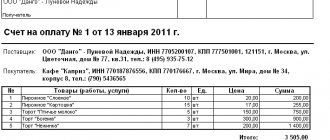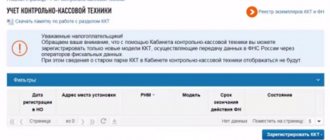The concept of dividends and payment terms
The concept of dividends is most fully defined in Art. Tax Code of the Russian Federation. The Code classifies as dividends any income received by a shareholder or participant when distributing profits.
However, the presence of net profit alone is not enough to accrue dividends. It is also necessary to take into account the rules established by Art. Law of December 26, 1995 No. 208-FZ “On JSC” and Art. Law of 02/08/1998 No. 14-FZ “On LLC”. The following restrictions are common to both main organizational and legal forms:
- full payment of the authorized capital must be made;
- net assets must be greater than the sum of the authorized capital and reserve funds, and this condition must be met even after the payment of dividends;
- the company should not have signs of bankruptcy, both at the time of making the decision to pay dividends and after their payment.
In addition to the general ones, there are also “specific” restrictions related to the characteristics of specific types of business entities.
For an LLC, a decision to pay dividends cannot be made until the value of the retiring participant's share has been paid.
The founders of a joint-stock company cannot begin the procedure for paying dividends if all the shares in respect of which they have the right to demand redemption have not been purchased from the shareholders.
Also, joint-stock companies must observe the order of payments depending on the category of shares - first preferred ones, which have advantages, then “ordinary” preferred ones, and then ordinary ones.
Which Russian company pays the most?
Russian companies increased interim dividend payments in the first half of 2021. The leaders, both in terms of the volume of payments and dividend yield, remain commodity companies - metallurgical and oil and gas companies. In conditions of high prices for raw materials and a weakening ruble, they found themselves in a privileged position, especially given the completion of most investment programs. Frequent payments should not be expected from banks, energy companies and developers.
Dmitry Ladygin
With majority shareholder for dividends
The first half of 2021 turned out to be fruitful in terms of dividend payments by Russian issuers. This is evidenced by data from the National Rating Agency (NRA). Almost three dozen Russian companies paid over 650 billion rubles during the reporting period. Another $670 million was paid by public foreign companies with Russian roots. Market participants note a positive trend in the increase in the number of companies paying interim dividends—three years ago there would not have been even two dozen of them. In many ways, Russian companies follow the example of foreign ones, for which quarterly payments are normal practice. According to Kirill Kukushkin, head of the NRA corporate sector ratings department, due to stricter control and requirements from minority shareholders, as well as a more competitive environment, “private companies strive to pay dividends on a regular basis and increase payments, thereby increasing shareholder returns and fueling investor interest in their shares." According to the head of the analytical research department of Uralsib Management Company, Alexander Golovtsov, it is natural for the Russian market that “majority shareholders strive to increase capitalization and their own cash receipts.”
Among the issuers that sharply increased interim dividend payments this year, NRA singles out companies with state participation - Rosneft (an increase of more than 3.8 times) and ALROSA (semi-annual dividends in 2021 exceeded payments for the entire 2021). In both cases, as the NRA notes, the companies' shareholders have changed in the recent past. As Kirill Kukushkin notes, there are very few companies on the Russian market with a predominant share of the state that pay interim dividends, “since, like the state, they live on annual budgets.” At the same time, as Raiffeisen Capital analyst Sofia Kirsanova points out, the presence of a large shareholder interested in a return on invested capital (an individual or the state) “significantly increases the chances of minority shareholders becoming beneficiaries of an improved dividend policy.”
However, as market participants note, the frequency of payments is not as important as the absolute value of dividends for the year and the free cash flow forecast for the next two to three years. As Alexander Golovtsov notes, for an investor, the frequency of payments is “a pleasant factor, but not a priority.” The level, sustainability and predictability of dividends are much more important, the expert believes. According to Alfa Capital portfolio manager Dmitry Mikhailov, from an attractiveness point of view, “it is important to have a transparent and stable dividend payment policy so that minority shareholders see that their interests coincide with the interests of majority shareholders.”
Whether the volume of payments is directly tied to net profit or free cash flow is not that important for an investor. This depends on the specifics of the issuer’s business and the special cases of individual companies. According to Sofia Kirsanova, a healthier scenario is to tie payments to free cash flow (FCF) (the company does not need to raise debt to provide promised payments to shareholders if FCF in some period is lower than net profit), which reduces the likelihood of changes in the dividend policies in the future. However, she also notes the disadvantage of this approach - the FCF value is influenced by many factors and is more difficult to predict than net profit.
Raw material dependence
The most attractive from the point of view of dividend yield are companies in the raw materials sector, primarily metallurgical companies. Securities of NLMK, MMK, Norilsk Nickel, and ALROSA have double-digit dividend yields relative to the current market price. Raiffeisen Capital adds preferred shares of Sberbank and Rostelecom, as well as ordinary shares of MTS. Uralsib Management Company believes that shares of IDGC and IDGC of Volga can provide similar returns at the end of the year. Oil companies (ordinary shares of LUKOIL, Rosneft, Gazprom Neft, preferred shares of Surgutneftegaz and Tatneft) at current oil prices can bring investors 6-9%. As Dmitry Mikhailov notes, dividend yields for Russian companies are at their highest level in the entire history of observation (since the 90s).
According to Ravil Yusipov, deputy general director of Transfingroup Management Company, “raw materials companies found themselves in ideal conditions - high prices for raw materials and devaluation of the ruble.” Many of them have “completed major capital investment programs and reduced their debt burden,” he said. Previously, metallurgists cited the lack of interesting projects for investment as the main argument for increasing dividend payments. At the same time, under the conditions of sanctions, majority shareholders have reduced “their appetite for expansion and are ready to pay increased dividends.” However, as Sofia Kirsanova notes, the latest comments by presidential aide Andrei Belousov about directing the excess cash flow of companies in the sector, at least partially, to socially or environmentally important projects may affect the level of dividend payments from metallurgists.
However, shareholders of not all companies benefited from the sanctions imposed. And first of all, UC RUSAL, which stopped paying dividends. Meanwhile, according to the latest edition of the dividend policy, the company was going to implement them quarterly, which encouraged investors who observed positive changes both in the aluminum market and in the company’s financial results. At best, the situation regarding this company may become clearer towards the end of the year.
By the end of the year I can pay additional dividends to LUKOIL, Gazprom Neft, and Detsky Mir. Moreover, in the long term, Gazprom Neft plans to make dividend payments at the level of 50% of net profit under IFRS (in 2021 - 28%). If a controlling stake is sold, Detsky Mir may also switch to paying out at least 50% of net profit in accordance with its dividend policy.
Without wasting time on specifics
But from some categories of issuers you should not yet expect frequent dividend payments. First of all, this applies to banks, energy companies, retailers and developers. As Sofia Kirsanova notes, Sberbank and VTB pay dividends once a year and, judging by comments from management, do not see the need to switch to more frequent payments. According to Alexander Golovtsov, it is now important for banks to “meet capital adequacy targets, which are more reliably calculated using annual reporting.” However, in his opinion, over time, “when the desired capital reserve is reached, they too may move closer to the international practice of quarterly payments.”
Energy companies and retailers are very dependent on inflation. As Mr. Yusipov notes, since inflation was low—for some, tariffs did not increase, for others, the average bill did not grow—both sectors do not have a growing market in gross terms. In addition, energy companies also still need funding for capital construction programs. Sofia Kirsanova notes that some of the developers, the PIK group) began to introduce the practice of interim payments, but it is unclear what became the main driver for this - “either the desire for global standards, or the desire to smooth out cash flow during the year, which already does not have stable dynamics due to the nature of the business." Moreover, as Mr. Yusipov notes, developers are the least attractive industry for those looking for dividend stories. According to his assessment, the sector “has signs of market overstocking, a decline in the solvency of the population, an increase in the cost of money, reform of sales of residential real estate under the DDU, etc.” Dmitry Mikhailov does not expect extraordinary profit growth for companies in these sectors next year, given the sluggish recovery in domestic demand.
Unfortunately, not all companies were able to meet their obligations. In 2021, the Moscow Exchange switched to paying semi-annual dividends. The exchange's balanced income structure allowed it to make money in various stock market conditions. However, this year it did not pay dividends for the first half of the year. This decision was due to increased volatility in the markets. “In this situation, there is always more active use of the central counterparty as the most reliable counterparty in the market, and this puts some pressure on its capital. Accordingly, for now we have decided to watch the development of events and hold funds in capital,” says the head of the exchange, Alexander Afanasyev. As the NRA notes, Transneft may not pay dividends for the first half of 2021. At least, the deadline for the company to decide on the first semi-annual dividends in its history in 2017 has long been exceeded.
How Russian companies paid dividends for the first half of 2021
| About. | Retained earnings from previous years | 40 | -83,0 | 1,62 | 3,4 | 76,0 | 9,5 | 42,4 | |
| ALROSA | About. | 1st half of the year | 5,93 | — | 43,67 | 58,3 | 19,2 | 62,0 | 23,3 |
| "VSMPO-Avisma" | About. | 1st half of the year | 756 | -0,9 | 8,72 | 9,9 | 43,3 | n. d. | — |
| MMK | About. | 1st and 2nd quarters | 2,39 | 175,0 | 26,71 | 40,1 | 29,7 | 25,3 | 100,2 |
| MTS | About. | 1st half of the year | 2,6 | -75,0 | 5,20 | 30,0 | 9,1 | 30,8 | -24,1 |
| NLMK | About. | 1st and 2nd quarters | 10,97 | 97,7 | 65,75 | 64,5 | 66,9 | 52,7 | 70,5 |
| NCSP | About. | 1st half of the year | 0,519216 | — | 10,00 | 8,3 | -41,6 | n.d. | — |
| NOVATEK | About. | 1st half of the year | 9,25 | 33,1 | 28,09 | 84,2 | 7,3 | 80,1 | 3,5 |
| "Norilsk Nickel" | About. | 1st half of the year | 776,02 | 246,1 | 122,80 | 98,0 | 76,8 | 155,2 | 445,8 |
| PIK Group | About. | Retained earnings from previous years | 22,71 | — | 15,00 | 0,3 | — | 2,1 | -82,6 |
| Polyus Gold | About. | 1st half of the year | 131,11 | 25,7 | 17,51 | 21,6 | -38,1 | 37,8 | 18,7 |
| "Rosneft" | About. | 1st half of the year | 14,58 | 280,7 | 154,50 | 309,0 | 312,0 | 363,0 | 103,9 |
| "Rosseti" | About. | 1st quarter | 0,011965 | — | 2,38 | 71,4 | 34,4 | 106,8 | 17,1 |
| "Rosseti" | Etc. | 1st quarter | 0,04287 | — | 0,09 | 71,4 | 34,4 | 106,8 | 17,1 |
| Severstal | About. | 1st and 2nd quarters | 84,26 | 80,4 | 70,59 | 60,6 | -34,8 | 52,7 | 101,1 |
| "Tatneft" | About. | 1st half of the year | 30,27 | — | 63,66 | 105,17 | 70,3 | 53,1 | 33,8 |
| "Tatneft" | Etc. | 1st half of the year | 30,27 | — | 4,47 | 105,17 | 70,3 | 53,1 | 33,8 |
| Phosagro | About. | 1st and 2nd quarters | 69 | 53,3 | 8,94 | 9,8 | -28,6 | 9,9 | 622,9 |
| "Cherkizovo" | About. | 1st half of the year | 20,48 | 322,6 | 0,90 | 8,7 | 70,5 | 0,4 | -82,0 |
A dash means the indicator is missing or correct calculation is impossible.
According to NRA, company reporting.
How Russian companies paid interim dividends in the first half of the year in Russia
| 10 | 97 | |
| 2014 | 11 | 77 |
| 2015 | 13 | 191 |
| 2016 | 16 | 156 |
| 2017 | 18 | 287 |
| 2018 | 17 | 651 |
Source: NRA
How interim dividends were paid in the first half of the year by companies with Russian capital abroad
| 2 | 36 | |
| 2014 | 4 | 132 |
| 2015 | 4 | 85 |
| 2016 | 5 | 136 |
| 2017 | 9 | 1143 |
| 2018 | 6 | 669 |
Source: NRA
Dividend calculation
The calculation of dividends in a joint-stock company is carried out in several stages.
First of all, the total amount that the company can allocate for payment is determined, taking into account the conditions listed in the previous section and the recommendations of the Board of Directors.
First, the amount to be paid on preferred shares is determined. They pay a fixed dividend - this is the amount specified in the company's charter for each type of such shares. This can be a percentage of the par value of the stock or a fixed amount of money:
- Dp = Kp1 x Dp1 + Kp2 x Dp2 + ... + Kpi x Dpi, where Kp1 ... Kpi is the number of preferred shares of each type
- Dp1 ... Dpi - the amount of dividends per type of share
Next, the remaining portion of the allocated funds is distributed among the holders of ordinary shares. How to calculate dividends per 1 ordinary share can be seen from the formula:
- To = (D – Dp) / Ko, where D is the total amount allocated by the company for the payment of dividends
- Ko - number of ordinary shares
In LLC everything is much simpler. How dividends are calculated in this case depends only on the distribution of shares between participants. The formula shows how to calculate dividends per founder:
- Di = D x DLi, where D is the total amount of distributed profit
- DLi - participant’s share in the authorized capital of the company
Let's look at an example of calculating dividends for a joint stock company.
The authorized capital of the company is 1 million rubles. and divided into 1000 shares with a par value of 1 thousand rubles. Of these, 200 pcs. are privileged, and 800 pcs. – ordinary. Based on the results of the year, a decision was made to pay dividends in the amount of 120 thousand rubles. According to the charter, dividends in the amount of 20% of the par value must be paid for each preferred share.
Payments on preferred shares will be:
- Dp = 200 pcs. x (20% x 1000 rub.) = 200 pcs. x 200 rub. = 40,000 rub.
Payment amount per one ordinary share:
- Up to = (120 tr. - 40 tr.) / 800 pcs. = 80 t.r. / 800 pcs. = 100 rub.
The dividend rate is the ratio of the annual payment to the par value (or current market price) of the stock. In this case, for preferred shares it will be 20%, and for ordinary shares – 10%.
Interim dividends in financial statements
Balance
To reflect the amounts of retained earnings (credit balance of account 84), in section III “Capital and reserves” of the liabilities side of the balance sheet, line No. 1370 is allocated. At the end of the year, it records the total amount of profit (both for the reporting year and for previous periods), starting from the moment existence of the company. In this line, retained earnings will be reflected minus accrued but unpaid dividends for the reporting year.
Dividends are reflected in the balance sheet only if they were accrued and paid during the year, that is, they were interim dividends. The summed total of all interim dividends paid in the reporting year for which the statements are being prepared is recorded there (in Section III “Capital and Reserves”) in a separate numbered line, enclosed in parentheses. Usually it is assigned the following serial number (for example, 1371, 1372).
Dividends declared at the end of the year are usually announced after the financial statements are approved. Consequently, this fact becomes an event after the reporting date, which means that such dividends cannot be shown on the balance sheet.
Following the recommendations of PBU 7/98 “Events after the reporting date,” companies that declared annual dividends based on the results of work, in the period of time between the reporting date and the date of approval of the reporting forms for the year, disclose information about accrued dividends in an explanatory note to the balance sheet.
Income statement
We remind you that the source of dividends is net profit. Information about its availability and amount as of the reporting date is contained in line 2400 of report No. 2.
The accrual and payment of dividends are not reflected in this form, since this report was created to inform the user about the amounts and sources of profits and losses. Dividends do not form profit (they are paid out of it), much less are they considered expenses.
As a category related to the reduction of capital, dividends are reflected in the statement of changes in equity, and their payment is recorded in the statement of cash flows upon payment.
Let's summarize. Dividend amounts are reflected in the financial statements as follows.
If they are accrued but not paid, then:
- in the balance sheet they reduce the amount of profit reflected in line 1370 “Retained earnings”;
- in the report on changes in capital in line 3327 “Reduction of capital - dividends” (when compiled by the company).
During the payment period:
— in the cash flow statement on line 4322 “Payments for the payment of dividends and other payments for the distribution of profits in favor of owners (participants).”
Procedure and terms of payment of dividends
Dividends in 2021 are paid based on the decision of the general meeting of shareholders (participants).
Many business owners are interested in whether it is possible to pay dividends in installments. The law allows you to do this once every quarter, half year or year. Because net profit is finally determined only at the end of the year, then quarterly and semi-annual payments are interim dividends.
The dividend payment date is tied to the date of the decision of the general meeting. For a joint stock company, the “cut-off” day is first determined, i.e. the date on which the list of persons entitled to receive them is recorded. The cutoff for dividends for 2021 should be set no earlier than 10 and no later than 20 days after the decision on payment is made (clause 5 of Article 42 of Law No. 208-FZ). The actual payment of dividends must be made within 10 days from the cut-off date - to nominee holders and trustees, and within 25 days - to all other shareholders.
For an LLC, the period for paying dividends should not exceed 60 days from the date of the decision (Clause 3, Article 28 of Law No. 14-FZ). The charter or minutes of the meeting of participants may provide for a shorter period. If it is not specified, then “by default” dividends must be issued within the 60-day period established by law.
The method of payment of dividends does not depend on the form of the legal entity. This may be the issuance of funds (both cash and non-cash) or the transfer of property.
When paying dividends, the company performs the functions of a tax agent for income tax or personal income tax, depending on the category of the income recipient.
For individuals, the personal income tax rate is 13% for residents (in the 2-NDFL certificate, the dividend income code is 1010) and 15% for non-residents (Article 224 of the Tax Code of the Russian Federation). The same rates (13% and 15%), depending on the resident status, are applied to income tax for legal entities (clause 3 of Article 284 of the Tax Code of the Russian Federation).
If the organization receiving the dividends owns over 50% of the authorized capital of the payer for a year or more, then a preferential rate of 0% is applied.
In this case, taxes are calculated taking into account whether the payer company, in turn, is the recipient of dividends. In this case, for dividend tax, the calculation formula is as follows:
- Н = К x Сн x (Д1 – Д2) К – share of dividends attributable to a specific recipient;
- Сн - tax rate on dividends
- D1 – total amount of dividends
- D2 - dividends received by the organization in the past or previous periods and not previously used to calculate taxes.
The above formula does not apply to payments in favor of non-residents. For them, the tax is calculated based on the total amount of dividends paid by the company (clause 6 of Article 275 of the Tax Code of the Russian Federation)
Concept
Dividends are part of the company's profit, which it is willing to share with the owner of the shares for having once bought its securities. Payments to shareholders may be in the form of cash, property, or other securities. The main source is net profit, i.e. profit minus taxes.
Most often they are paid in cash. But other methods are sometimes used. For example, in 2021, the board of directors of JSC Plemzavod im. V.I. Chapaeva” proposed to pay dividends in products: 400 kg of grain, 10 kg of sugar and 10 kg of vegetable oil per paper.
Payments on ordinary and preferred shares may be the same or may differ. For example, Bashneft paid 158.95 rubles at the end of 2018. for all categories. And Mechel transferred 18.21 rubles to shareholders for preferred securities, and 0 rubles for ordinary securities.
Dividends are accrued and paid based on the results:
- 1st quarter
- 6 months,
- 9 months,
- reporting year.
This is a company's right under the law on joint stock companies, but not an obligation. Therefore, some companies pay once a year, some – quarterly. Some do this only for preferred securities, while others do not pay shareholders at all.
For example, for 2021 the following examples can be given:
| Company | 1st quarter 2021 | Half year 2021 | 9 months 2021 | Reporting year 2021 |
| Gazprom | + | |||
| Sberbank | + | |||
| Severstal | + | + | + | + |
| Norilsk Nickel | + | + | ||
| Alrosa | + | + | ||
| Tatneft (ordinary shares) | + | + | + | |
| Lukoil | + | + |
Opinion of fiscal authorities
For several years, tax authorities have taken the position that in this case there is a transfer of ownership of the property, which means there is a sale and, as a consequence, the obligation to charge VAT and income tax (tax according to the simplified tax system) (letter from the Ministry of Finance dated December 17. 2009 No. 03-11-09/405, letter of the Federal Tax Service of the Russian Federation dated May 15, 2014 No. GD-4-3 / [email protected] ).
Recent letters from the Ministry of Finance of the Russian Federation dated August 25, 2017 No. 03-03-06/1/54596 and dated February 7, 2018 No. 03-05-05-01/7294 confirm this position.
In giving such explanations, the Ministry of Finance of the Russian Federation is probably guided by the following logic: if an organization, if it had unnecessary property, wanted to pay dividends in cash, it would first have to sell this property, pay taxes and only then distribute profits to its participants.
But we dare to reassure you: judicial practice on this issue has developed contrary to the position of the Ministry of Finance and the Federal Tax Service of the Russian Federation.










